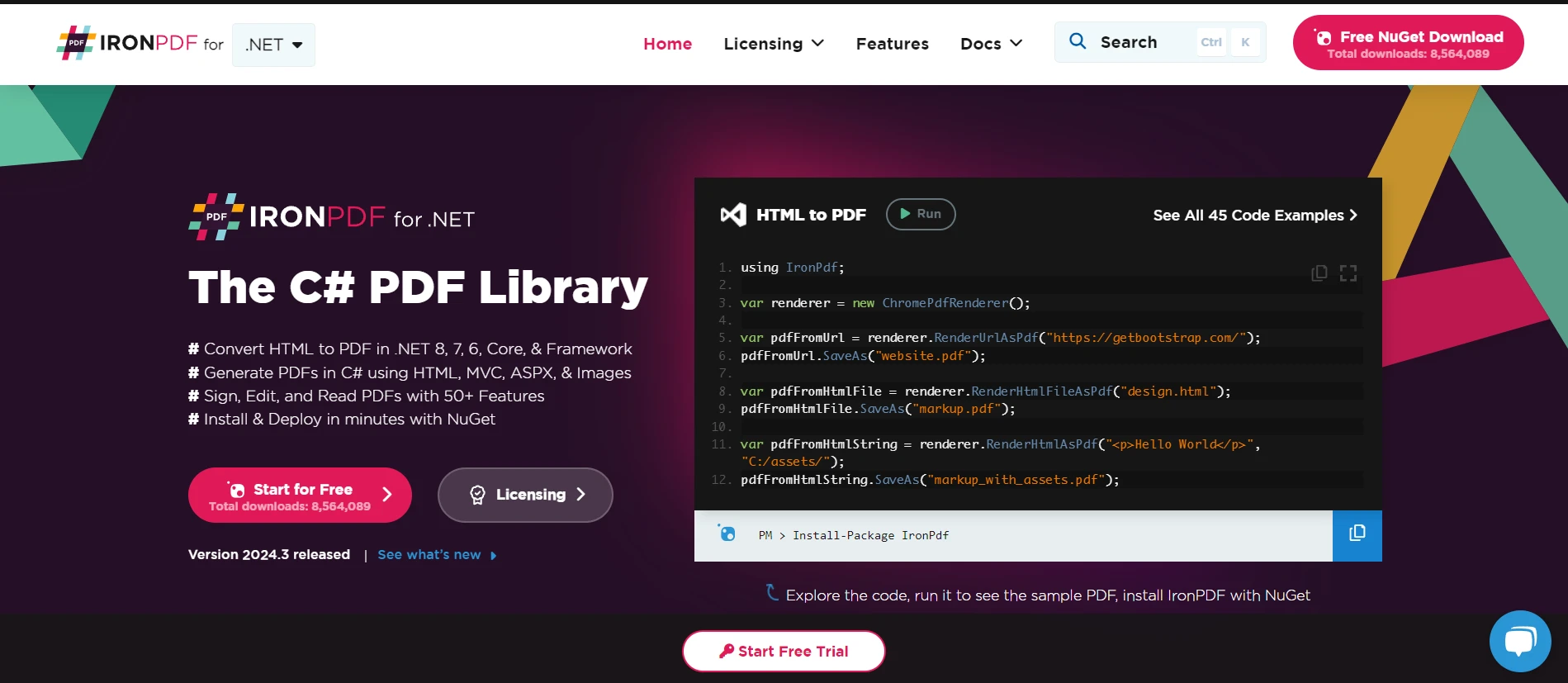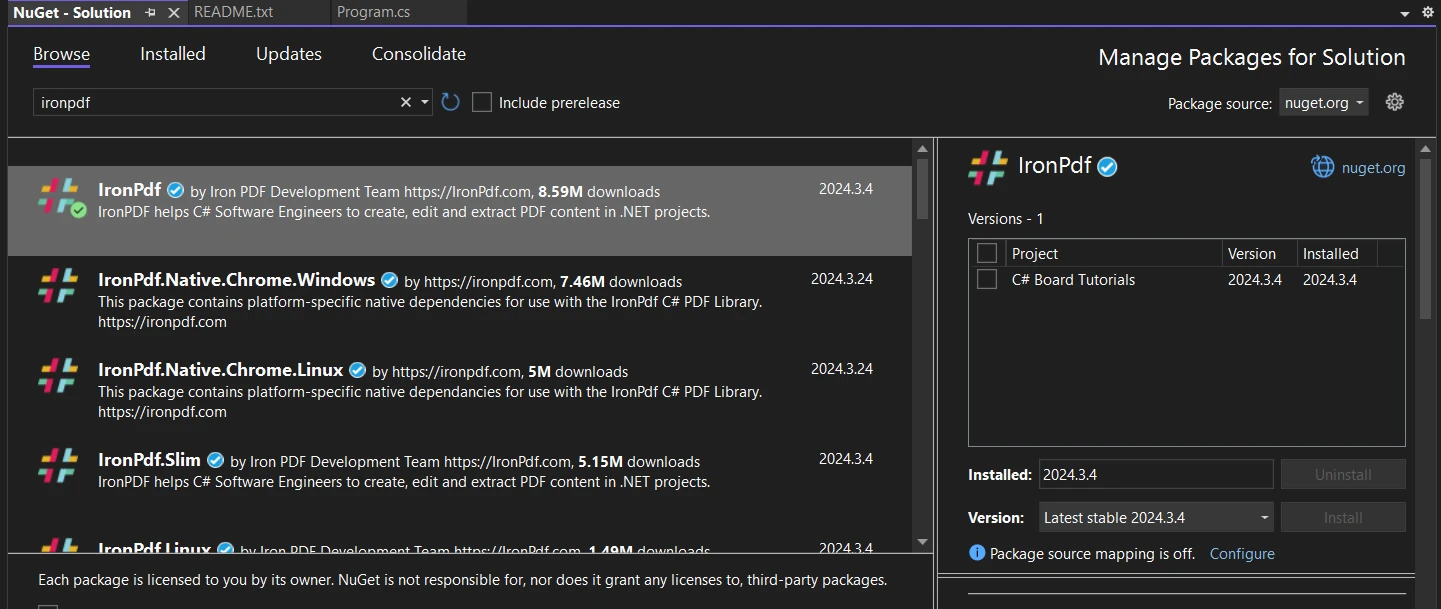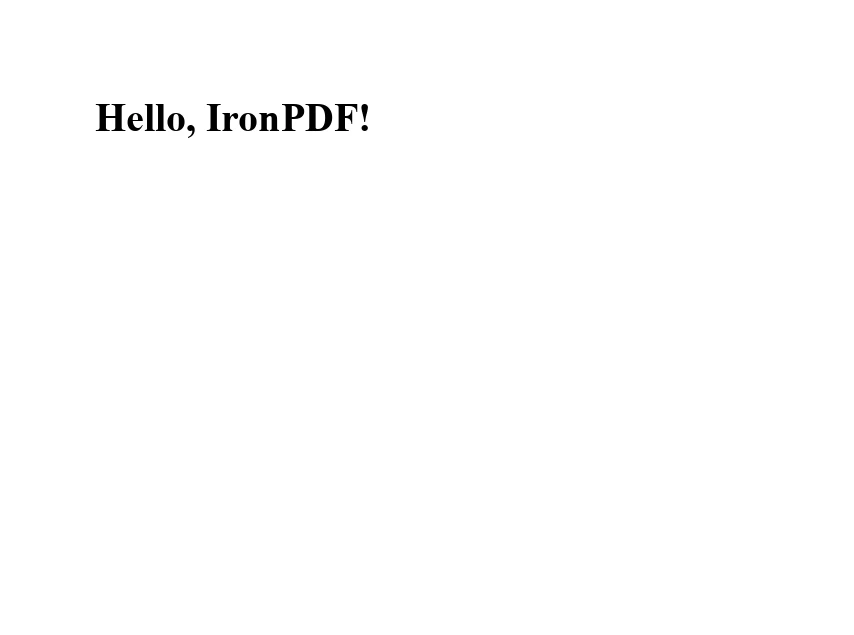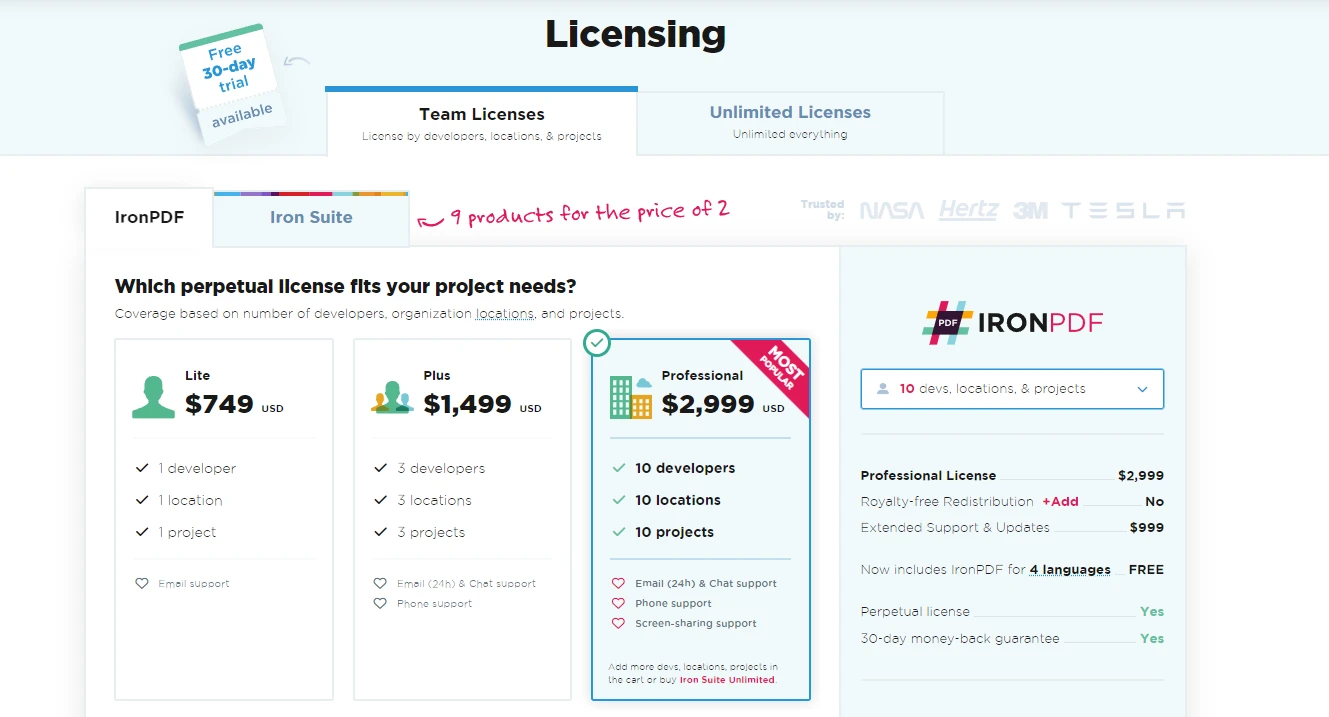Published April 4, 2024
C# Using Statement (How It Works For Developers)
The using statement in C# is a fundamental concept that aids in managing resources efficiently, particularly when working with disposable objects. This tutorial will break down what the using statement is, how it works, and why it's beneficial, especially for those new to C#.
By the end of this guide, you'll have a solid understanding of how to implement this statement in your code for better resource management and cleaner, more readable code. We'll also discuss IronPDF and how it can be used with the using statement later in the article.
Understanding Disposable Objects and the IDisposable Interface
Before diving into the using statement, it's crucial to understand disposable objects and the IDisposable interface. In .NET, many resources like file handles, network connections, and database connections are not managed by the garbage collector.
Such resources are termed unmanaged resources. To manage these resources properly, classes that encapsulate them implement the IDisposable interface, which includes a single method, Dispose. This method is called to release the unmanaged resources manually when they are no longer needed.
The Basics of the Using Statement
Syntax and Usage
The using statement simplifies the process of releasing unmanaged resources. It ensures that the Dispose method is called on a disposable object as soon as the object goes out of scope.
Think of the using block as a safety zone that makes sure resources are automatically cleaned up after use. Here's a basic example to illustrate its usage:
using (StreamReader reader = new StreamReader("file.txt"))
{
// You can read the file here
}using (StreamReader reader = new StreamReader("file.txt"))
{
// You can read the file here
}Using reader As New StreamReader("file.txt")
' You can read the file here
End UsingIn the example above, StreamReader is a class that implements the IDisposable interface. The using statement ensures that the reader's Dispose method is called automatically when control leaves the scope defined by the curly braces.
How It Works
When you wrap a disposable object with a using statement, it essentially translates to a try block with a finally block. In the finally block, the Dispose method is called, ensuring that the resource is released properly even if an exception occurs.
If the code inside the using block throws an error, don't worry; the Dispose method will still be called, ensuring resources are released safely
Advanced Concepts of the Using Statement
Managing Multiple Resources
You can manage multiple disposable objects within a single using statement. This approach keeps your code cleaner and ensures that all resources are disposed of correctly:
using (SqlConnection conn = new SqlConnection(connString))
using (SqlCommand cmd = new SqlCommand(query, conn))
{
// Work with your database here
}using (SqlConnection conn = new SqlConnection(connString))
using (SqlCommand cmd = new SqlCommand(query, conn))
{
// Work with your database here
}Using conn As New SqlConnection(connString)
Using cmd As New SqlCommand(query, conn)
' Work with your database here
End Using
End UsingUsing Alias Directive
In addition to the core functionalities of the using statement, C# offers features like the using alias directive and efficient handling of local variables within using blocks to further simplify resource management and enhance code readability.
Sometimes, when working with external libraries or dealing with class name conflicts, our code can become cluttered and hard to follow. The using alias directive comes to the rescue by allowing us to assign a more readable or shorter alias to a namespace or class.
Let's consider a scenario where you're working with two different classes that have the same name but reside in different namespaces. You can use the using alias directive to differentiate between them easily:
using Project = FirstNamespace.Project;
using ExternalProject = SecondNamespace.Project;
// Now you can use Project and ExternalProject in your code to refer to the specific classes without confusion.using Project = FirstNamespace.Project;
using ExternalProject = SecondNamespace.Project;
// Now you can use Project and ExternalProject in your code to refer to the specific classes without confusion.Imports Project = FirstNamespace.Project
Imports ExternalProject = SecondNamespace.Project
' Now you can use Project and ExternalProject in your code to refer to the specific classes without confusion.The Using Declaration
Introduced in C# 8.0, the using declaration is syntactic sugar that makes your code even more concise. Instead of wrapping the disposable object with curly braces, you can declare it, and it will be disposed at the end of the scope it was declared in:
using StreamReader reader = new StreamReader("file.txt");
// Use reader here
// It will be disposed of here automaticallyusing StreamReader reader = new StreamReader("file.txt");
// Use reader here
// It will be disposed of here automaticallyUsing reader As New StreamReader("file.txt")
' Use reader here
' It will be disposed of here automatically
End UsingCustom Classes and IDisposable
You can also apply the using statement to custom classes by implementing the IDisposable interface. This is particularly useful when your class is responsible for managing one or more resources:
public class ResourceHolder : IDisposable
{
public void Dispose()
{
// Release your resources here
}
}public class ResourceHolder : IDisposable
{
public void Dispose()
{
// Release your resources here
}
}Public Class ResourceHolder
Implements IDisposable
Public Sub Dispose() Implements IDisposable.Dispose
' Release your resources here
End Sub
End ClassWith your class implementing IDisposable, you can then use it within a using statement just like any other disposable object.
Introduction to IronPDF: The C# PDF Library

IronPDF is a comprehensive PDF generation library designed for the .NET platform, crafted with C# at its core. IronPDF makes the PDF creation process easy, utilizing HTML, CSS, images, and JavaScript for efficient PDF rendering.
It supports comprehensive PDF manipulation, simplifying what is typically a complex task with other APIs. It does not only simplifies the PDF creation process but also adds compatibility across a wide range of application types, including web, server, console, and desktop applications.
Installing IronPDF
The most efficient way to add IronPDF to your project is through the NuGet package manager. Simply open your project in Visual Studio, navigate to "Solution Explorer," right-click on "Dependencies," and choose "Manage NuGet Packages." Here, you can search for "IronPdf" and install the package with just a few clicks.

Example Usage of IronPDF with the Using Statement
Let's tie this back to the using statement in C# for resource management. Below is a simple code example demonstrating how to use IronPDF to generate a PDF from HTML content, employing the using statement to ensure proper disposal of resources:
using IronPdf;
class Program
{
static void Main(string[] args)
{
var renderer = new ChromePdfRenderer();
// Generate a PDF from HTML string and save it
using (var document = renderer.RenderHtmlAsPdf("<h1>Hello, IronPDF!</h1>"))
{
document.SaveAs("HelloIronPDF.pdf");
}
// The using statement ensures that resources are cleaned up correctly
}
}using IronPdf;
class Program
{
static void Main(string[] args)
{
var renderer = new ChromePdfRenderer();
// Generate a PDF from HTML string and save it
using (var document = renderer.RenderHtmlAsPdf("<h1>Hello, IronPDF!</h1>"))
{
document.SaveAs("HelloIronPDF.pdf");
}
// The using statement ensures that resources are cleaned up correctly
}
}Imports IronPdf
Friend Class Program
Shared Sub Main(ByVal args() As String)
Dim renderer = New ChromePdfRenderer()
' Generate a PDF from HTML string and save it
Using document = renderer.RenderHtmlAsPdf("<h1>Hello, IronPDF!</h1>")
document.SaveAs("HelloIronPDF.pdf")
End Using
' The using statement ensures that resources are cleaned up correctly
End Sub
End Class
License

IronPDF offers a variety of license options to accommodate different team sizes and deployment needs, ensuring flexibility for developers and organizations of all sizes.
License price starts from $749. It offers a free trial to test out it's features before purchasing.
Conclusion and Best Practices
The using statement is a powerful feature in C# that ensures efficient resource management and cleaner code. It's particularly useful when working with file streams, database connections, or any other local variable or object that consumes system resources.
By automatically calling the Dispose method, it helps prevent resource leaks and keeps your application running smoothly. Remember to always use the using statement with any object that implements the IDisposable interface.
IronPDF invites you to try their product without any financial obligation using their free trial. If you're satisfied with its performance, acquiring a license starts at the price point of $749.











